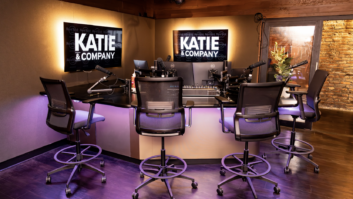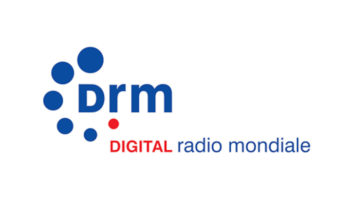This is one in a series about trends in consoles for radio broadcasting.
Christian Sighinolfi has been R&D director for hardware products at AxelTech since the company’s foundation. He contributed to developing its most successful products, such as the Oxygen consoles series and Falcon audio processors.

Radio World: How has the explosion in hybrid and remote workflows influenced the design of broadcast consoles and related infrastructure?
Christian Sighinolfi: The latest generation of equipment is designed to facilitate seamless simultaneous control by both local and remote users. A key requirement for this system is that remote control should be achievable through standard web browser tools. This approach reduces the need for specific applications, which increases flexibility and makes things easier to access.
In our commitment to simplifying user experience, we have successfully integrated our Oxygen Remoter into our consoles for several years.
Additionally, this year, we have introduced an innovative web remote solution that further expands our capabilities, providing users with a convenient and efficient way to manage equipment remotely through a web interface. This advancement marks a significant step forward in our efforts to streamline control processes and enhance operational efficiency.
RW: What demands do you hear from potential buyers today that are different from 10 or 15 years ago?
Sighinolfi: A decade or more years ago, the landscape of audio technology was quite different. Digital consoles struggled to gain the trust of customers, as many perceived them to be unreliable compared to their analog counterparts. This skepticism stemmed from early experiences where digital equipment often failed or underperformed in critical situations, leading professionals to favor traditional methods.
However, in recent years, significant advancements in technology have transformed the industry. The rise of audio over internet protocol or AoIP has revolutionized the way we transmit and manage audio, making it more efficient and versatile. Additionally, the growing necessity for remote control capabilities has driven the demand for advanced functionality in consoles, allowing for seamless operation from various locations.
Furthermore, the trend towards more compact and portable equipment has played a crucial role in this technological shift. As digital consoles have evolved, they now offer an impressive array of features while also being smaller and more user-friendly than ever before. This combination of reliability, versatility and convenience has finally led to a broad acceptance and affirmation of digital consoles in the audio industry, marking a significant turning point in how audio professionals approach their craft.
RW: What does the next generation of user interface look like?
Sighinolfi: The dimensions of consoles are progressively shrinking, leading to a shift away from traditional physical controls. We are increasingly seeing the emergence of virtual controls that allow for more flexibility and customization.
I envision a future where control surfaces will predominantly feature virtual elements rather than physical components. This transition will likely be facilitated by the use of touch monitors that provide tactile feedback, giving users the sensation of pressing buttons or turning knobs, even though they are interacting with a flat screen. This innovation could enhance the user experience, making it more immersive and intuitive while freeing up space for other design elements. As this trend continues, it will be interesting to see how it shapes the way we interact with technology.
RW: What misconceptions about consoles would you like the industry to be aware of?
Sighinolfi: It’s a common misconception that digital consoles are universally superior simply because they operate in a digital format. Many assume that all digital consoles provide the same level of process quality and audio quality, but this is far from the truth. The overall performance of a digital mixer is influenced by several factors, including its processing power, the sophistication of its processing algorithms and the quality of its analog-to-digital and digital-to-analog converters.
Higher processing power enables more complex and accurate audio manipulation, while advanced algorithms can enhance sound fidelity and offer more precise control over audio signals. Additionally, the quality of the A/D and D/A converters plays a crucial role in how accurately the audio is captured and reproduced, which ultimately affects the overall sound quality. Therefore, when evaluating digital consoles, it’s essential to consider these variables rather than assuming that all digital mixers offer equal performance.
RW: Any suggested best practices — or common errors to avoid — for someone who is setting out to make a console system buying decision?
Sighinolfi: One of the most prevalent issues we encounter in our operations involves the quality of AoIP audio streams. Frequently, users express concerns regarding the clarity and overall sound quality of these streams, which often stems from inadequately maintained network infrastructure.
It’s crucial to recognize that a properly functioning network is the backbone of high-quality AoIP audio. Neglecting to maintain network elements such as switches, routers and cabling can lead to significant degradation in audio performance. To mitigate these audio quality problems, we strongly recommend implementing dedicated networks specifically for audio streaming.
By isolating AoIP traffic from other types of data transmissions, such as internet browsing or file transfers, you can significantly reduce the chances of network congestion and interference, ensuring a more stable and clear audio stream. In summary, regular maintenance of network infrastructure combined with the use of separate networks for audio allows for a more reliable and higher-quality audio streaming experience.
RW: What other questions should we in the industry be asking about this topic?
Sighinolfi: When discussing broadcast consoles, it’s crucial to recognize the significance of their integration capabilities with various services and devices inherent in the overall workflow.
Modern broadcast consoles should be designed with user-friendly protocols that facilitate seamless interfacing with automated systems and a wide range of external devices. This includes but is not limited to control panels, programmable keyboards, lighting systems and other essential equipment.
Unfortunately, many existing consoles lack the flexibility necessary for easy integration, often leading to challenges that can make the incorporation of these technologies into your workflow both costly and, in some cases, nearly unfeasible. The ability to interconnect devices effectively not only enhances operational efficiency but also helps in streamlining production processes, making it a vital consideration when selecting a broadcast console.
Read more about this topic in the free ebook “Trends in Radio Consoles 2025.”







